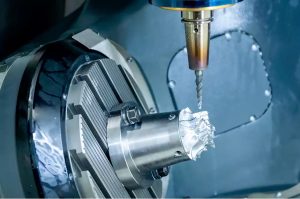CNC machining services stands at the forefront of modern manufacturing, offering unparalleled precision and efficiency in the production of intricate parts and components. As a highly automated process, CNC machining relies on sophisticated software and machinery to transform digital designs into tangible products. In this comprehensive exploration, we delve into the intricacies of CNC machining, from the activation of CNC systems to the multifaceted considerations that come into play during the machining process.

CNC System Activation and Programming:
At the heart of CNC machining is the seamless interplay between software and machinery. When the CNC system is activated, it comes to life with a set of programmed instructions that dictate the tool’s movements and operations. The code generator within the numerical system plays a pivotal role in translating design specifications into executable commands. The CNC machine, in essence, functions akin to a robotic system, carrying out precise cuts and shaping processes as instructed by the programmed code.
Flawless Operation Assumption and Real-world Challenges:
While CNC programming assumes flawless operation, the real-world scenario introduces the potential for errors, particularly when the machine is tasked with simultaneous cuts in multiple directions. This underscores the importance of thorough testing, simulation, and validation of CNC programs to minimize the risk of errors during actual machining operations. Realizing the potential for challenges ensures a more robust and reliable CNC machining process.
Part Program and Tool Positioning:
A critical aspect of CNC machining is the part program, a sequence of inputs that defines the positioning of the tool. This program acts as a roadmap, guiding the CNC machine through intricate toolpaths to create the desired geometry. Precision in tool positioning is paramount, and the part program serves as the blueprint that transforms a digital design into a tangible, machined product.
Material Considerations and their Impact on Cost:
The choice of materials significantly influences the CNC machining process. Hardened materials necessitate the use of more robust CNC machines and higher-quality cutting tools, contributing to an increase in overall costs. Furthermore, the size of the material introduces additional considerations. Larger materials pose a higher risk of failure, prompting machinists to factor in this risk when providing cost estimates for a particular job.
Wall Thickness and Cut Width Challenges:
Beyond material considerations, the thickness of walls and the width of cuts introduce additional challenges. Thin wall thickness and narrow cuts require a delicate touch during machining. Machinists must exercise caution, adjusting cutting speeds and employing specialized tooling to avoid issues such as deflection or tool breakage. This level of precision comes at an additional cost, but it ensures the integrity of the final product.
Factors Contributing to Cost Calculation:
The calculation of costs in CNC machining extends beyond material considerations. It encompasses various factors, including the capabilities of the CNC machine, the complexity of the part program, tool wear, and machine maintenance. Skilled labor is also a significant component, especially when manual interventions or adjustments are necessary during the machining process. A holistic approach to cost calculation ensures a thorough understanding of the resources and expertise required for a successful CNC machining endeavor.
Conclusion:
In conclusion, CNC machining is a multifaceted process that demands a nuanced understanding of software programming, material properties, and various considerations that impact cost and efficiency. Navigating the intricacies of CNC machining requires a careful balance between technological prowess and real-world considerations, ultimately ensuring the production of high-quality, precision-engineered components. As technology continues to advance, CNC machining remains at the forefront of manufacturing, driving innovation and pushing the boundaries of what is possible in the world of precision engineering.
